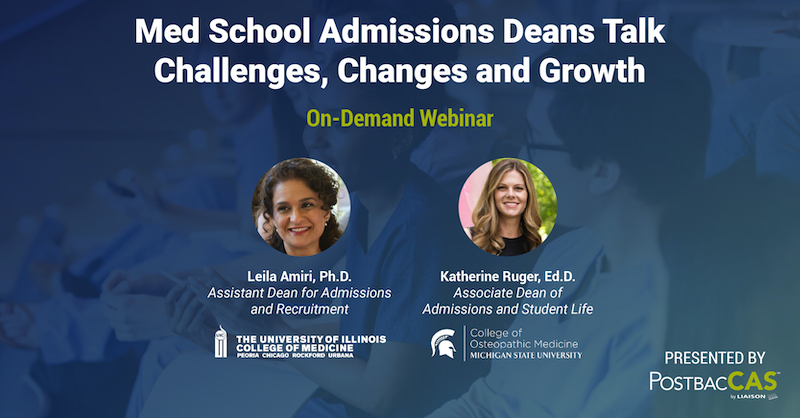What does the recent spike in applications across health education fields mean for postbaccalaureate programs and students?
Some call it the “Fauci Effect.” Others speculate the pandemic is making Americans eager to find new ways to help their communities. Whatever the reason, there’s no denying that the past year has inspired more students than ever to consider careers in health and medical fields. Just look at the numbers:
- The Association of Schools & Programs of Public Health (ASPPH) reported a 20% increase in applications to its member institutions in 2020.
- The American Association of Colleges of Osteopathic Medicine (AACOM) reported a 19% surge in application growth.
- The Association of American Medical Colleges (AAMC) experienced an 18% increase.
- The American Association of Colleges of Nursing (AACN) reported a 6% increase.
As a result of this growing competition among students hoping to be admitted into graduate-level health and medical programs, postbaccalaureate (“postbac”) programs are now more essential than ever for potential applicants eager to enhance their academic qualifications.
To shine a light on these important issues, Liaison’s new on-demand webinar, “Med School Admissions Deans Talk Challenges, Changes and Growth,” explores how medical school admissions offices are positioning themselves and their students for success in the coming year.
Panelists include Katherine Ruger, Ed.D., Associate Dean of Admissions & Student Life at the Michigan State University College of Osteopathic Medicine and Leila Amiri, Ph.D., Assistant Dean for Admissions & Recruitment at the University of Illinois College of Medicine. Robert Ruiz, managing director of PostbacCAS™, the only Centralized Application Service (CAS™) for postbac programs.
Where do we go from here?
“It’s been interesting for us. We had experienced declines in our applications for three years. And this year, we are faced with a joyous 48% increase. We are interviewing individuals who had thought of taking gap years and doing other things, but now they don’t want to wait anymore. They want to get out and help as quickly as they can.” – Leila Amiri, Ph.D.
During the webinar, panelists discussed how they adapted and evolved during the early days of the pandemic, and how they plan to meet their enrollment goals moving forward. Topics included:
- The current admissions landscape, and what the recent surge in interest and rise in applications means for their programs.
- The need for greater diversity in the medical fields.
- How institutions have changed their instruction during the pandemic.
- How med school admissions teams have adjusted their processes, interviews and recruitment initiatives.
- Which changes will remain in place after the anticipated “return to normal.”
“With such a huge applicant pool, we’re trying to take a personalized approach to the extent we can,” said Dr. Ruger. “For example, our communications to students have increased significantly. We have always been very dedicated to taking a holistic approach to reviewing applicants and making sure there’s a ‘mission fit’ with those applicants.”

